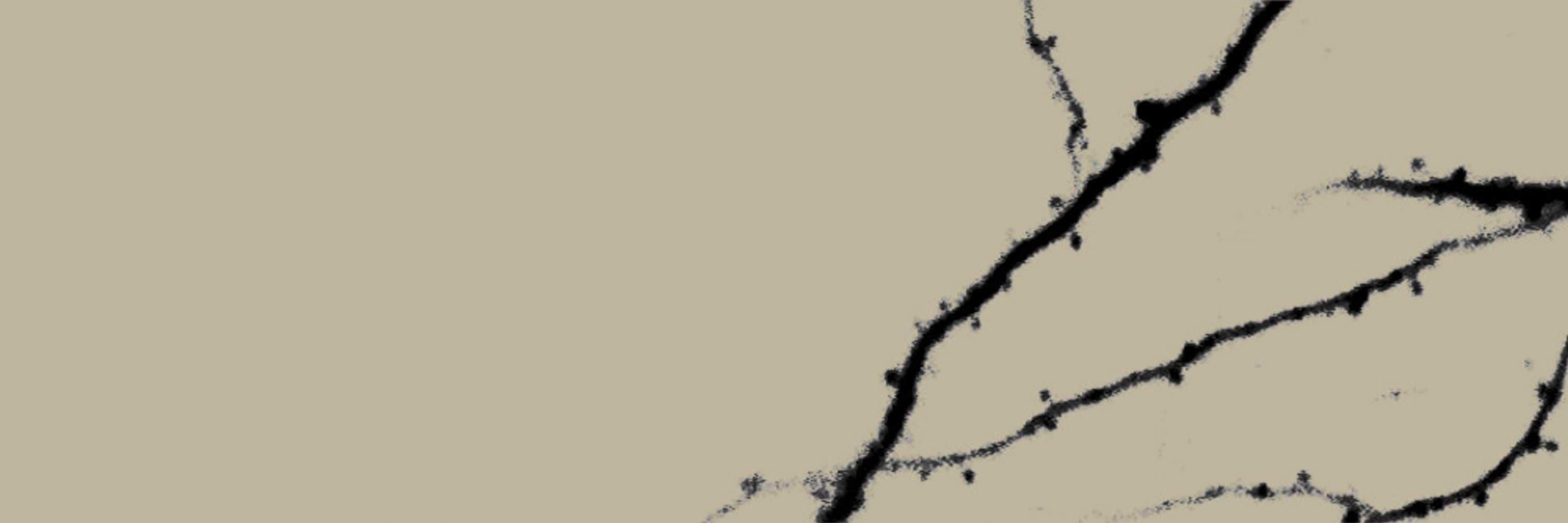
Alex Kwan
@alexkwan.bsky.social
Professor at Cornell BME. Studying the neurobiology of psychiatric #drugs including #ketamine and #psychedelics.
https://alexkwanlab.org
https://alexkwanlab.org
Beautiful “action potential” stained glass made by @laurenatlas.bsky.social
Picked 🔵 because it reminds me of our #ChR2 optotagging experiments 🤓🧪
Picked 🔵 because it reminds me of our #ChR2 optotagging experiments 🤓🧪

November 6, 2025 at 2:51 PM
Beautiful “action potential” stained glass made by @laurenatlas.bsky.social
Picked 🔵 because it reminds me of our #ChR2 optotagging experiments 🤓🧪
Picked 🔵 because it reminds me of our #ChR2 optotagging experiments 🤓🧪
My department, Cornell BME, is hiring!
This tenure-track faculty position is a great opportunity to join a vibrant community that values research, teaching, and entrepreneurship.
📝 academicjobsonline.org/ajo/jobs/30816
This tenure-track faculty position is a great opportunity to join a vibrant community that values research, teaching, and entrepreneurship.
📝 academicjobsonline.org/ajo/jobs/30816

October 28, 2025 at 6:31 PM
My department, Cornell BME, is hiring!
This tenure-track faculty position is a great opportunity to join a vibrant community that values research, teaching, and entrepreneurship.
📝 academicjobsonline.org/ajo/jobs/30816
This tenure-track faculty position is a great opportunity to join a vibrant community that values research, teaching, and entrepreneurship.
📝 academicjobsonline.org/ajo/jobs/30816
Preparing tomorrow’s visit to @tulanebrain.bsky.social @tulaneu.bsky.social by grabbing a muphuletta 😀 #NewOrleans

October 28, 2025 at 5:28 PM
Preparing tomorrow’s visit to @tulanebrain.bsky.social @tulaneu.bsky.social by grabbing a muphuletta 😀 #NewOrleans
Today I found the secret chess♟️spot at Cornell, with an unbeatable lake view

October 23, 2025 at 6:57 PM
Today I found the secret chess♟️spot at Cornell, with an unbeatable lake view
It was fun to host Lucas Pinto at for our department seminar last week.
Lucas showed a new VR task combining evidence accumulation and delay-match-to-sample. Mice did the task using near-orthogonal coding scheme across cortical regions
👉 www.biorxiv.org/content/10.1...
Lucas showed a new VR task combining evidence accumulation and delay-match-to-sample. Mice did the task using near-orthogonal coding scheme across cortical regions
👉 www.biorxiv.org/content/10.1...

September 17, 2025 at 12:22 PM
It was fun to host Lucas Pinto at for our department seminar last week.
Lucas showed a new VR task combining evidence accumulation and delay-match-to-sample. Mice did the task using near-orthogonal coding scheme across cortical regions
👉 www.biorxiv.org/content/10.1...
Lucas showed a new VR task combining evidence accumulation and delay-match-to-sample. Mice did the task using near-orthogonal coding scheme across cortical regions
👉 www.biorxiv.org/content/10.1...
At Dave Putnam's legendary drug formulation and delivery class. @cornellengineering.bsky.social
A treat for me to be a student again this semester. 📚
A treat for me to be a student again this semester. 📚

September 2, 2025 at 5:15 PM
At Dave Putnam's legendary drug formulation and delivery class. @cornellengineering.bsky.social
A treat for me to be a student again this semester. 📚
A treat for me to be a student again this semester. 📚
This was a fun piece to write for @cp-trendspharma.bsky.social
“The ABCs of Psychedelics: A Preclinical Roadmap for Drug Discovery” with John McCorvy and @jmantsch.bsky.social
www.cell.com/trends/pharm...
“The ABCs of Psychedelics: A Preclinical Roadmap for Drug Discovery” with John McCorvy and @jmantsch.bsky.social
www.cell.com/trends/pharm...

August 28, 2025 at 1:58 PM
This was a fun piece to write for @cp-trendspharma.bsky.social
“The ABCs of Psychedelics: A Preclinical Roadmap for Drug Discovery” with John McCorvy and @jmantsch.bsky.social
www.cell.com/trends/pharm...
“The ABCs of Psychedelics: A Preclinical Roadmap for Drug Discovery” with John McCorvy and @jmantsch.bsky.social
www.cell.com/trends/pharm...
This was a team effort spearheaded by Quan Jiang.
With help from collaborators at UC Irvine, CUHK 🇭🇰, and @alleninstitute.org, and support from @onemindorg.bsky.social and NIMH.
12/12
With help from collaborators at UC Irvine, CUHK 🇭🇰, and @alleninstitute.org, and support from @onemindorg.bsky.social and NIMH.
12/12
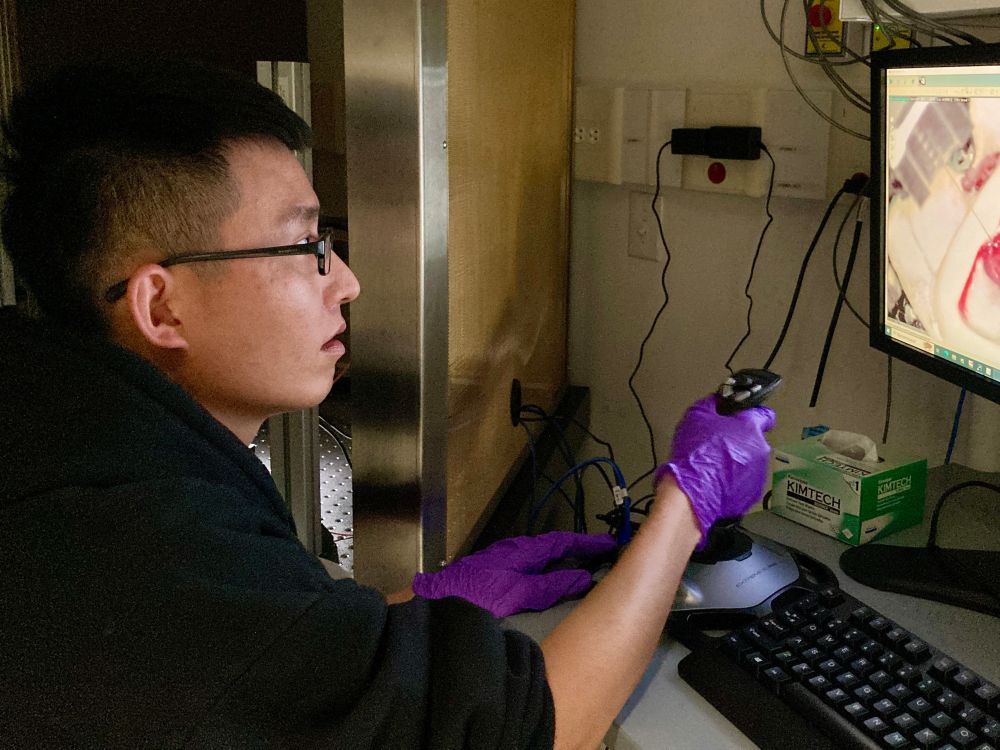
August 7, 2025 at 3:00 PM
This was a team effort spearheaded by Quan Jiang.
With help from collaborators at UC Irvine, CUHK 🇭🇰, and @alleninstitute.org, and support from @onemindorg.bsky.social and NIMH.
12/12
With help from collaborators at UC Irvine, CUHK 🇭🇰, and @alleninstitute.org, and support from @onemindorg.bsky.social and NIMH.
12/12
2) We demonstrate that neural activity modulation may be a promising approach to sculpt the psychedelic-evoked neural plasticity.
11/12
11/12

August 7, 2025 at 2:58 PM
2) We demonstrate that neural activity modulation may be a promising approach to sculpt the psychedelic-evoked neural plasticity.
11/12
11/12
Two main conclusions:
1) Psilocybin induces network-specific plasticity.
There was strengthened routing of inputs from RSP (mouse homolog of default mode network) and perceptual regions to subcortical targets. Meanwhile, inputs that are part of cortico-cortical loops were weakened.
10/12
1) Psilocybin induces network-specific plasticity.
There was strengthened routing of inputs from RSP (mouse homolog of default mode network) and perceptual regions to subcortical targets. Meanwhile, inputs that are part of cortico-cortical loops were weakened.
10/12
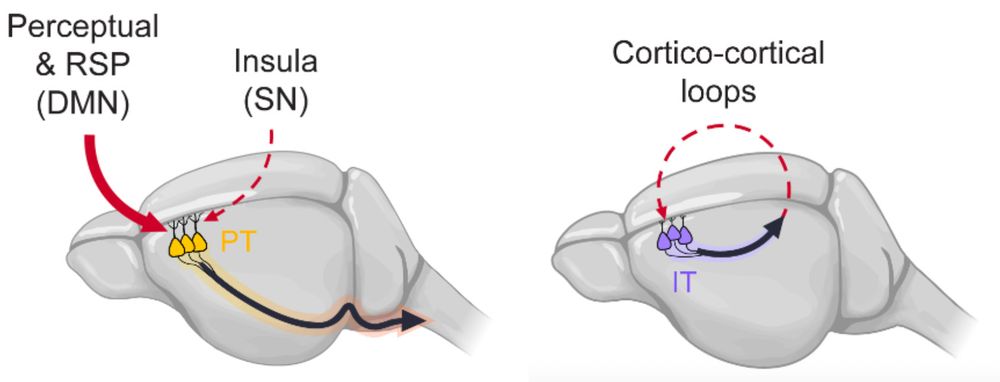
August 7, 2025 at 2:58 PM
Two main conclusions:
1) Psilocybin induces network-specific plasticity.
There was strengthened routing of inputs from RSP (mouse homolog of default mode network) and perceptual regions to subcortical targets. Meanwhile, inputs that are part of cortico-cortical loops were weakened.
10/12
1) Psilocybin induces network-specific plasticity.
There was strengthened routing of inputs from RSP (mouse homolog of default mode network) and perceptual regions to subcortical targets. Meanwhile, inputs that are part of cortico-cortical loops were weakened.
10/12
If neural activity influences whether a region undergoes remodeling after psilocybin treatment, can we causally manipulate this plasticity?
We show this is possible - chemogenetic silencing of RSP disrupted psilocybin’s ability to strengthen those inputs.
9/12
We show this is possible - chemogenetic silencing of RSP disrupted psilocybin’s ability to strengthen those inputs.
9/12
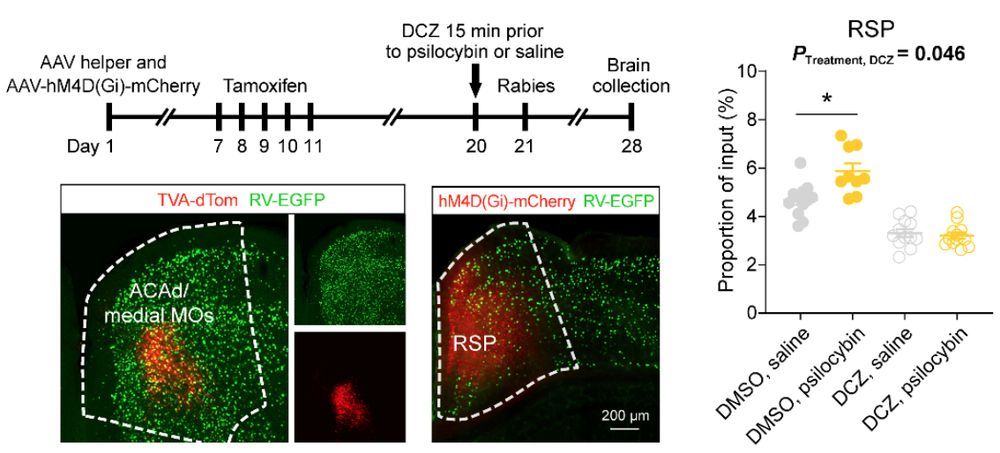
August 7, 2025 at 2:57 PM
If neural activity influences whether a region undergoes remodeling after psilocybin treatment, can we causally manipulate this plasticity?
We show this is possible - chemogenetic silencing of RSP disrupted psilocybin’s ability to strengthen those inputs.
9/12
We show this is possible - chemogenetic silencing of RSP disrupted psilocybin’s ability to strengthen those inputs.
9/12
To investigate this possibility, we focused on one presynaptic region – the retrosplenial cortex (RSP).
Neuropixels recording confirms that indeed RSP neurons that project to frontal cortex fire more in response to psilocybin.
8/12
Neuropixels recording confirms that indeed RSP neurons that project to frontal cortex fire more in response to psilocybin.
8/12

August 7, 2025 at 2:56 PM
To investigate this possibility, we focused on one presynaptic region – the retrosplenial cortex (RSP).
Neuropixels recording confirms that indeed RSP neurons that project to frontal cortex fire more in response to psilocybin.
8/12
Neuropixels recording confirms that indeed RSP neurons that project to frontal cortex fire more in response to psilocybin.
8/12
What drives this pattern of psilocybin-induced circuit remodeling?
One clue came from whole-brain c-Fos mapping, which correlated well with the input changes, suggesting neural activity in the presynaptic regions may play a role.
7/12
One clue came from whole-brain c-Fos mapping, which correlated well with the input changes, suggesting neural activity in the presynaptic regions may play a role.
7/12

August 7, 2025 at 2:56 PM
What drives this pattern of psilocybin-induced circuit remodeling?
One clue came from whole-brain c-Fos mapping, which correlated well with the input changes, suggesting neural activity in the presynaptic regions may play a role.
7/12
One clue came from whole-brain c-Fos mapping, which correlated well with the input changes, suggesting neural activity in the presynaptic regions may play a role.
7/12
We also traced from IT pyramidal cells, which interestingly have opposing changes in input fraction after psilocybin. What were strengthened for PT tend to be weakened for IT, and vice versa.
6/12
6/12
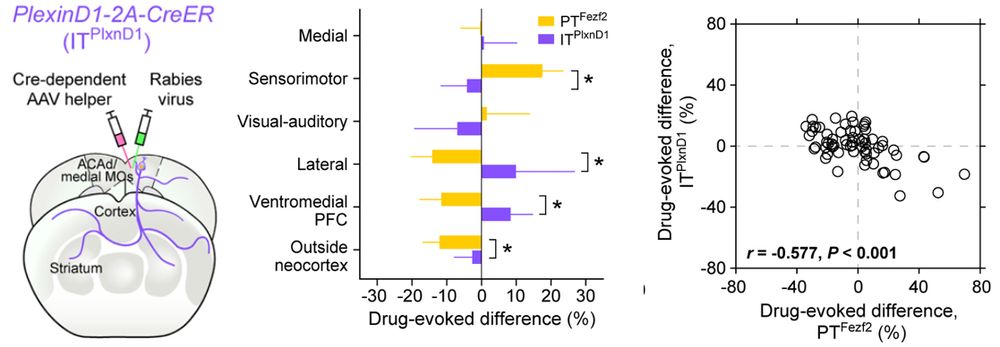
August 7, 2025 at 2:55 PM
We also traced from IT pyramidal cells, which interestingly have opposing changes in input fraction after psilocybin. What were strengthened for PT tend to be weakened for IT, and vice versa.
6/12
6/12
The regions were not random though, increased inputs came from regions belonging to specific cortical networks, while decreases were inputs originating from other networks.
5/12
5/12
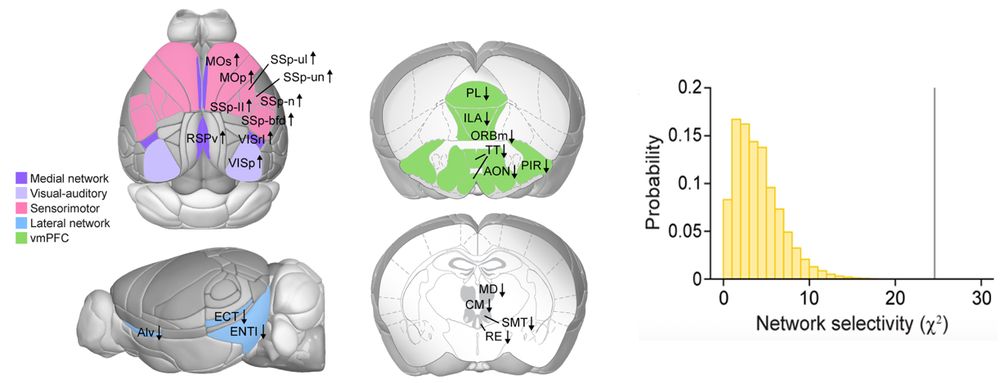
August 7, 2025 at 2:55 PM
The regions were not random though, increased inputs came from regions belonging to specific cortical networks, while decreases were inputs originating from other networks.
5/12
5/12
Our initial hypothesis was that psilocybin may boost inputs from one or few regions. We would identify those key regions…
Surprisingly, tracing from PT pyramidal cells, our results show more widespread changes with inputs from many regions altered after psilocybin administration.
4/12
Surprisingly, tracing from PT pyramidal cells, our results show more widespread changes with inputs from many regions altered after psilocybin administration.
4/12

August 7, 2025 at 2:54 PM
Our initial hypothesis was that psilocybin may boost inputs from one or few regions. We would identify those key regions…
Surprisingly, tracing from PT pyramidal cells, our results show more widespread changes with inputs from many regions altered after psilocybin administration.
4/12
Surprisingly, tracing from PT pyramidal cells, our results show more widespread changes with inputs from many regions altered after psilocybin administration.
4/12
We would inject psilocybin or saline, then used monosynaptic rabies viruses to trace the input cells to the frontal cortical pyramidal neurons.
The whole-brain images were beautiful!
🔴 starter cells. 🟢 input cells.
(early #FluorescenceFriday - my favoriate hashtag)
The whole-brain images were beautiful!
🔴 starter cells. 🟢 input cells.
(early #FluorescenceFriday - my favoriate hashtag)
August 7, 2025 at 2:53 PM
We would inject psilocybin or saline, then used monosynaptic rabies viruses to trace the input cells to the frontal cortical pyramidal neurons.
The whole-brain images were beautiful!
🔴 starter cells. 🟢 input cells.
(early #FluorescenceFriday - my favoriate hashtag)
The whole-brain images were beautiful!
🔴 starter cells. 🟢 input cells.
(early #FluorescenceFriday - my favoriate hashtag)
The idea was to find circuits that are altered by #psychedelics, going beyond simply an increase of dendritic spines.
In the grant proposal, this figure was exactly how I pitched to @onemindorg.bsky.social, who believed in the vision and provided the critical early support for the project.
2/12
In the grant proposal, this figure was exactly how I pitched to @onemindorg.bsky.social, who believed in the vision and provided the critical early support for the project.
2/12

August 7, 2025 at 2:52 PM
The idea was to find circuits that are altered by #psychedelics, going beyond simply an increase of dendritic spines.
In the grant proposal, this figure was exactly how I pitched to @onemindorg.bsky.social, who believed in the vision and provided the critical early support for the project.
2/12
In the grant proposal, this figure was exactly how I pitched to @onemindorg.bsky.social, who believed in the vision and provided the critical early support for the project.
2/12
New preprint + thread 🧵
#Psychedelics induce the formation of new synapses, but where do they connect?
Our rabies tracing study reveals that #psilocybin shifts connectivity across specific cortical networks.
www.biorxiv.org/content/10.1...
1/12
#Psychedelics induce the formation of new synapses, but where do they connect?
Our rabies tracing study reveals that #psilocybin shifts connectivity across specific cortical networks.
www.biorxiv.org/content/10.1...
1/12

August 7, 2025 at 2:49 PM
New preprint + thread 🧵
#Psychedelics induce the formation of new synapses, but where do they connect?
Our rabies tracing study reveals that #psilocybin shifts connectivity across specific cortical networks.
www.biorxiv.org/content/10.1...
1/12
#Psychedelics induce the formation of new synapses, but where do they connect?
Our rabies tracing study reveals that #psilocybin shifts connectivity across specific cortical networks.
www.biorxiv.org/content/10.1...
1/12
It appears to be their only paper on psychedelics.
There was a reply in the same year, suggesting nothing special about the blue color. The sample probably has psilocin as well. Similar to how psilocybe mushroom turns blue - here the brain tissue provides the enzymes needed for the blue to emerge.
There was a reply in the same year, suggesting nothing special about the blue color. The sample probably has psilocin as well. Similar to how psilocybe mushroom turns blue - here the brain tissue provides the enzymes needed for the blue to emerge.

July 28, 2025 at 2:16 PM
It appears to be their only paper on psychedelics.
There was a reply in the same year, suggesting nothing special about the blue color. The sample probably has psilocin as well. Similar to how psilocybe mushroom turns blue - here the brain tissue provides the enzymes needed for the blue to emerge.
There was a reply in the same year, suggesting nothing special about the blue color. The sample probably has psilocin as well. Similar to how psilocybe mushroom turns blue - here the brain tissue provides the enzymes needed for the blue to emerge.
Gilmour and O’Brien mixed psilocybin with brain tissues enriched in synapses and mitochondria, they saw the mixture turned blue.
The paper was one of the earliest attempts to understand how a psychedelic interacts with the brain at a biochemical level.
The paper was one of the earliest attempts to understand how a psychedelic interacts with the brain at a biochemical level.

July 28, 2025 at 2:11 PM
Gilmour and O’Brien mixed psilocybin with brain tissues enriched in synapses and mitochondria, they saw the mixture turned blue.
The paper was one of the earliest attempts to understand how a psychedelic interacts with the brain at a biochemical level.
The paper was one of the earliest attempts to understand how a psychedelic interacts with the brain at a biochemical level.
Everyone approves of the dinner to end the #GRCPsychedelics 🦞
@deffinger.bsky.social @jasteralaina.bsky.social @sequencemyneuro.bsky.social @veronicachelu.bsky.social and Erin Neyhart
@deffinger.bsky.social @jasteralaina.bsky.social @sequencemyneuro.bsky.social @veronicachelu.bsky.social and Erin Neyhart

July 17, 2025 at 11:22 PM
Everyone approves of the dinner to end the #GRCPsychedelics 🦞
@deffinger.bsky.social @jasteralaina.bsky.social @sequencemyneuro.bsky.social @veronicachelu.bsky.social and Erin Neyhart
@deffinger.bsky.social @jasteralaina.bsky.social @sequencemyneuro.bsky.social @veronicachelu.bsky.social and Erin Neyhart
Great panel this morning on the human and clinical studies of psychedelics -
my impression is we have come a long way in the last few years in terms of design and quantification #GRCPsychedelics
my impression is we have come a long way in the last few years in terms of design and quantification #GRCPsychedelics
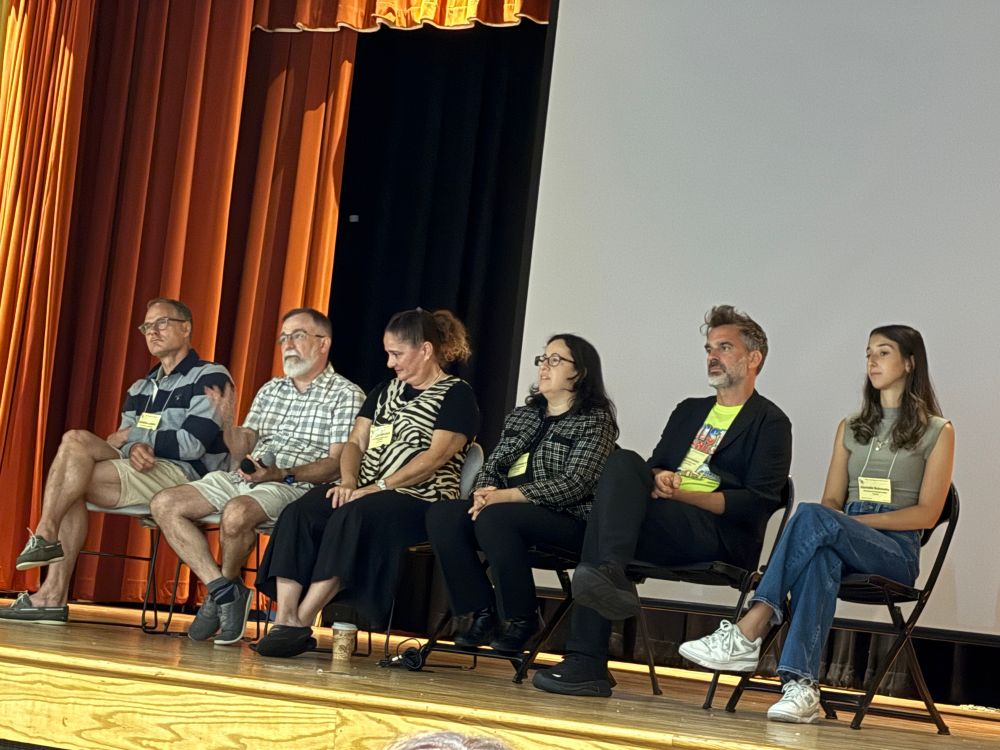
July 17, 2025 at 4:20 PM
Great panel this morning on the human and clinical studies of psychedelics -
my impression is we have come a long way in the last few years in terms of design and quantification #GRCPsychedelics
my impression is we have come a long way in the last few years in terms of design and quantification #GRCPsychedelics
We worked so well as a team for the #GRCPsychedelics @vyazovskiy.bsky.social @viditavaidya.bsky.social @melissaherman.bsky.social
and congrats to @theborislab.bsky.social and @mikaelpalner.bsky.social, who will be the future vice-chairs!
and congrats to @theborislab.bsky.social and @mikaelpalner.bsky.social, who will be the future vice-chairs!
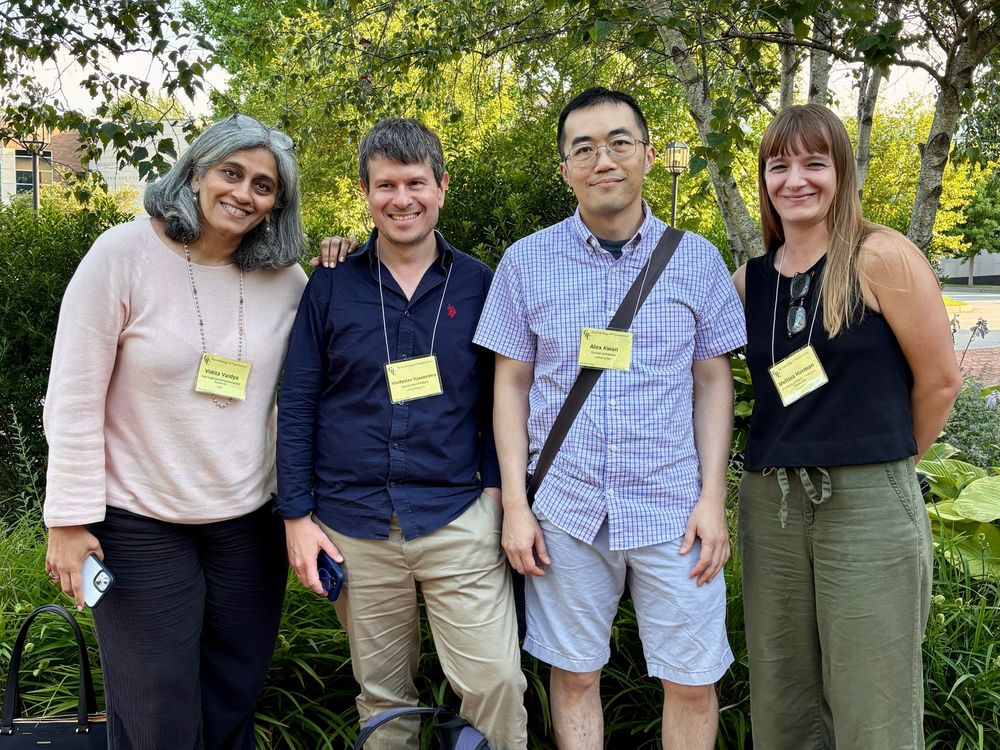
July 17, 2025 at 1:09 PM
We worked so well as a team for the #GRCPsychedelics @vyazovskiy.bsky.social @viditavaidya.bsky.social @melissaherman.bsky.social
and congrats to @theborislab.bsky.social and @mikaelpalner.bsky.social, who will be the future vice-chairs!
and congrats to @theborislab.bsky.social and @mikaelpalner.bsky.social, who will be the future vice-chairs!


